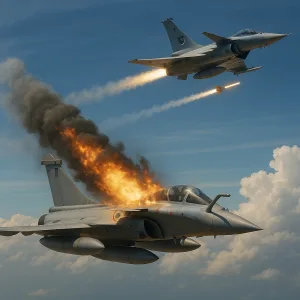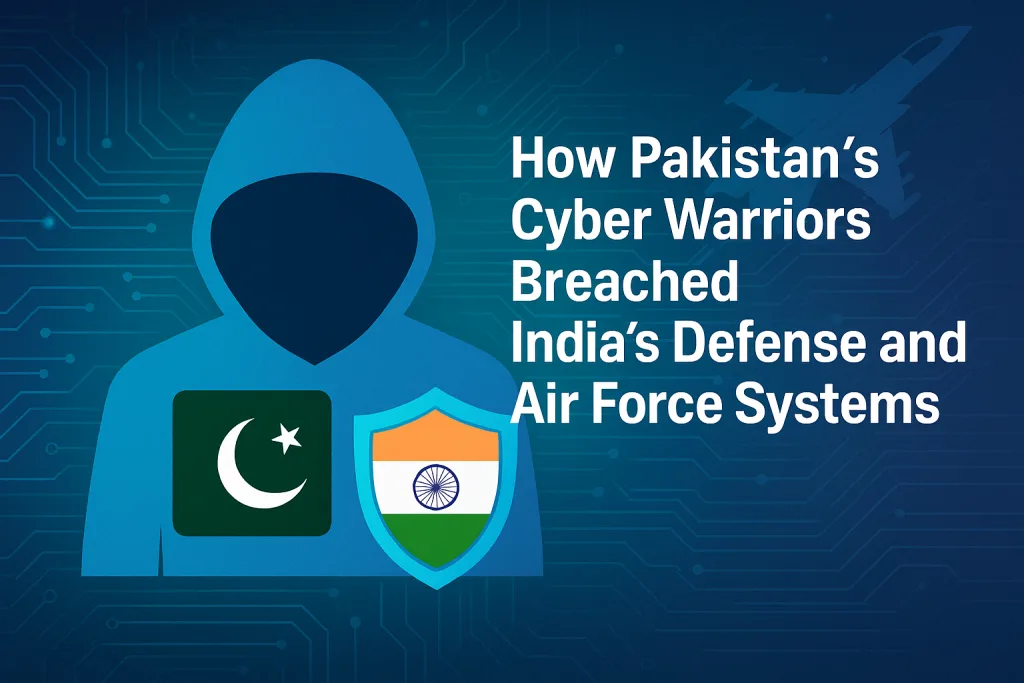Overview
On midnight of 6th and 7th May 2025, India initiated Operation Sindoor, in response to the Pahalgam terror incident. Pakistani claim is that it was an unprovoked escalation by Indian forces. Pakistani authorities claim that it had repeatedly called for independent enquiry into Pahalgam incident. Whereas, Pakistani authorities claim that India neither responded to it nor any provided any evidence of alleged role of Pakistani militants or involvement of Pakistani establishment in the Pahalgam terror attack. The subcontinent saw a digital assault which has never been seen before. Reportedly between May 6 and May 10, Pakistan cyber warriors breached India’s Defense systems by launching one of the largest coordinated cyberattacks in the history. According to the claims, during their attacks they targeted India’s defense and aviation systems. These cyber attacks allegedly exposed glaring vulnerabilities in what the world believed to be highly secured and reliable networks.
A Digital Assault Rooted in Retaliation
According to a detailed investigative report by India Today, within just four days over 1.5 million cyberattacks were initiated from IP addresses, which were linked to Pakistan. These attacks included attacks on defense websites, internal secure communication systems, and critical digital infrastructure used by the Indian Air Force (IAF).
The report claims that most of the attacks were neutralized by India’s Computer Emergency Response Team (CERT-IN); whereas, 150 attacks breached their perimeters. This breach enabled the attackers to gain different levels of access to sensitive internal databases, network structures, and their classified files.
Who Were the Cyber Warriors?
The attackers were not random freelancers. Groups like APT36 (Transparent Tribe), Team Insane PK, and Pakistan Cyber Force were involved in these attacks. These groups have a known history of gaining access to Indian military and government assets. Recorded Future had once flagged APT36 as a Pakistani aligned group using their custom malware and phishing techniques to extract intelligence from Indian assets.
Reports from The Hacker News have confirmed that these groups used following techniques to carry out their attacks:
- AI-generated deep phishing emails by mimicking Indian defense personnel
- Customized remote access tools (RATs)
- Zero day exploits targeting outdated Windows Server systems
Consequences: From Bytes to Bombs
1. Rafale Jets Downed

Early morning on May 7, Pakistani DG ISPR claimed that Pakistan has shot down 5 Indian fighter jets including 3 Rafales. Initially Indians claimed that it was a mechanical failure or a targeting error. Whereas, on May 9, Indian defense forums and social media began circulating reports that three Rafale fighter jets were shot down during a routine exercise near the Rajasthan border. Later on a leaked internal I.A.F. memo (reported by Eurasian Times) indicated that navigation and IFF (Identification Friend or Foe) systems had been remotely tampered with.
2. S-400 Missile System Disruption
On May 10, India’s newly deployed S-400 missile defense system in Punjab was disrupted and it was non operational for nearly two hours. Defense analysts, including certain reports from Defense News India, speculated that this was likely the result of unauthorized access to the system’s digital interface. And the unauthorized access might have disrupted its radar synchronization and launch readiness.
3. Compromised Airbases
At the IAF’s bases in Ambala and Pathankot unexpected alarm triggers and network freezes were witnessed. Internal sources, quoted anonymously by Times Now, revealed that perimeter surveillance and internal communication grids were temporarily disabled.
AI Used as A Force Multiplier

A major novelty in these attacks was the use of Artificial Intelligence to scale and automate complex hacking tasks. As highlighted in Check Point Research’s latest report, and in my last article, AI-powered cybercrime is setting aside traditional cybersecurity defenses. It is overwhelmingly claimed by Pakistani authorities in recent escalation between the two nuclear powers.
Reportedly, in this case, attackers used AI to:
- Generate real time spoofed emails with perfect linguistic
- Successfully evade antivirus and intrusion detection systems
- Simulate multi user behavior to avoid account flagging
These tactics made the attacks stealth attackers. Hence they were able to attack more effectively than conventional brute-force or DDoS attacks.
India’s Countermeasures
According to reports published on media and social media, after the ceasefire, India has activated its Cyber Command, i.e its joint defense cybersecurity wing. Simultaneously it has rolled out emergency patches across all defense systems to update their outdated servers. Furthermore, in collaboration with foreign cybersecurity firms, CERT-IN has initiated real-time IP tracing and sandbox testing.
The Indian Defense Minister, during a press conference on May 12, has stated that:
“India is treating this not just as a cyber incident but as an act of digital war. Responses will be calibrated, strategic, and visible.”
Global Implications
Cyberwarfare is no longer a theoretical or hypothetical front. It is an active battlefield with actual casualties. The events which happened among Pakistan and India on May 6 – 10, 2025 are evident that airstrikes can now be triggered from a laptop instead of a fighter jet.
The Lessons to be Learnt:
- Zero trust architecture is no longer optional
- AI in cybersecurity must up to the mark with the AI used in attacks
- International cyber treaties need to be signed urgently
Editorial Note on Removed References
Editor’s Note:
Some of the external sources which have been referenced in this article, including those initially hosted on platforms like Eurasian Times, Defense News India, and Times Now, are no longer accessible or return a “404 Page Not Found” error. These links were live and referenced in multiple cyber intelligence forums when this article was first researched.
Their disappearance raises important questions about control on information and transparency in state level cyber incidents.
Speculation: Was There Any Pressure to Silence?
While there’s no official confirmation, yet, it’s reasonable to speculate that Indian authorities may have exerted pressure on news platforms to remove or censor stories that portray major security vulnerabilities. There may be specific reasons to so in the wake of:
- The downing of Rafale jets under circumstances claimed by Pakistan
- The failure of India’s S-400 system
- And the cyber breaches at key airbases
If these incidents were publicly acknowledged, they could:-
- Destroy national confidence
- Reveal technical weaknesses to historical rivals
- Spark political backlashes for the sitting Government.
In past incidents, particularly following Pulwama, in which first India crossed into Pakistan and claimed to have stuck any terror camp near Balakot, KP. In response to that Pakistan shot down IAF fighter jet and arrested an Indian fighter pilot. Even on that occasion several media outlets were instructed (formally or informally) not to build narratives that could “aid enemy propaganda.” A similar pattern may be unfolding here in the digital warfare domain in times to come.
Disclaimer: This is just a speculative assessment based on known media patterns and geopolitical behavior. No official directive has been surfaced publically at the time of this publication for its removal.
Final Thoughts
What happened between May 6 and 10, 2025 was not just a cyber breach, rather it was a warning for the whole world. A well coordinated cyber attack from Pakistan’s digital warriors pierced into the very core of India’s defense framework. It has shaken the illusion of Indian defense to be digitally invulnerable.
Now that the stone of 5th generation warfare has been laid, all nations will have to reassess their national security infrastructure.
Call to Action
To stay updated on the digital crimes and to understand real time cyber warfare stories like this, subscribe to Nauman Bodla’s blog.




This was sensitive issue but you handled it very sensibly, keep it up